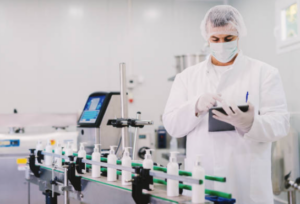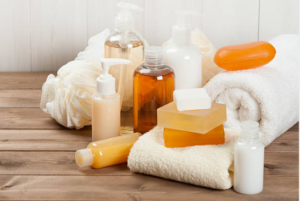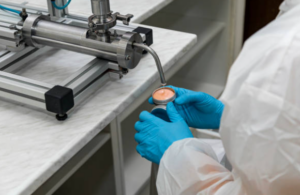Reducing Water Usage

As climate change intensifies, the beauty industry finds itself at a crossroads, forced to confront the environmental impact of its practices. Among the myriad issues, water scarcity has emerged as a critical concern. Climate-induced droughts are affecting communities worldwide, making water conservation an urgent priority. In this comprehensive guide, we will delve into the beauty industry’s response to the global water crisis, exploring innovative solutions, sustainable practices, and the collective effort to reduce water usage.
The journey of a cosmetic product often begins with the cultivation of raw ingredients. Agriculture, a water-intensive industry in itself, provides the botanicals, oils, and extracts essential for many beauty formulations. However, traditional farming practices can strain water resources, contributing to environmental degradation.
Once harvested, these ingredients undergo extraction processes that may involve significant water usage. The extraction of essential oils, for example, often requires large quantities of water to obtain concentrated plant essences. Additionally, the manufacturing phase of cosmetics, including emulsification, blending, and product formulation, typically involves substantial water inputs.
Beyond the production stage, the water footprint of the beauty industry extends into the daily routines of consumers. Cleansing, bathing, and other beauty rituals contribute significantly to individual water consumption. The ubiquity of water-based products, from shampoos and shower gels to facial cleansers, has further heightened the industry’s impact on global water resources.
Waterless Beauty: A Paradigm Shift
One notable response to the water crisis in the beauty industry is the rise of waterless beauty products. Traditionally, skincare and haircare formulations contain high percentages of water as a base. However, innovative brands are challenging this norm by creating concentrated formulas that eliminate the need for excessive water content. Products like waterless shampoo bars, powdered face masks, and anhydrous (water-free) serums are gaining popularity for their environmental benefits and reduced carbon footprint.
Advantages of Waterless Beauty:
- Sustainability: Waterless beauty products require fewer resources for production, resulting in a reduced environmental impact. This shift aligns with the industry’s commitment to sustainable practices.
- Reduced Packaging: Waterless formulations often come in more compact and eco-friendly packaging. With less reliance on water, there is a decrease in the need for bulky containers, contributing to reduced waste.
- Longer Shelf Life: Without water, products are less prone to bacterial growth and spoilage, leading to longer shelf lives. This not only reduces product waste but also enhances the overall sustainability of the beauty industry.
- Travel-Friendly: Waterless beauty products are inherently more portable, making them ideal for consumers who value convenience and those looking to minimize their environmental footprint during travel.
Beyond the consumer-facing aspects of water reduction, the beauty industry is making strides in sustainable sourcing and manufacturing practices. This involves responsible water usage in ingredient cultivation, eco-friendly production processes, and the implementation of water recycling systems within manufacturing facilities.
Initiatives and Strategies:
- Ethical Ingredient Sourcing: Beauty brands are increasingly prioritizing ethically sourced ingredients that require less water for cultivation. This includes sourcing botanical extracts from regions where the climate is conducive to the plant’s growth, reducing the need for excessive irrigation.
- Water Recycling Systems: Manufacturing facilities are implementing advanced water recycling systems to minimize water wastage. These systems treat and purify water used in production, allowing it to be reused in subsequent manufacturing processes.
- Carbon-Neutral Production: Some beauty brands are striving for carbon neutrality in their manufacturing processes. By optimizing energy efficiency and adopting renewable energy sources, these companies aim to reduce their overall environmental impact, including water consumption.

Consumer Education and Awareness
A crucial aspect of the beauty industry’s response to water scarcity is the promotion of consumer education and awareness. Brands are taking steps to inform their customers about the water footprint of beauty products and encouraging mindful consumption.
Educational Initiatives:
- Transparent Labeling: Brands are increasingly transparent about their water usage and environmental practices. Clear labeling helps consumers make informed choices and support brands committed to water conservation.
- Campaigns and Partnerships: Beauty brands are engaging in public awareness campaigns and partnering with environmental organizations to educate consumers about the water-related challenges faced by the industry. This collaborative approach fosters a sense of shared responsibility.
- Product Efficiency Tips: Brands are providing practical tips for consumers to maximize the efficiency of their beauty routines while minimizing water usage. This includes guidance on the appropriate amount of product to use and alternative methods for application.
Innovations in Product Formulation
In the quest for sustainable beauty, product formulation is undergoing a revolution. From waterless beauty products to concentrated formulas, innovative approaches are reshaping the industry’s landscape.
Noteworthy Innovations:
- Solid Skincare: Solid formulations, such as cleansers and moisturizers, are gaining popularity. These products eliminate the need for water in their composition and packaging, offering a sustainable alternative.
- Water-Efficient Dispensing Systems: Brands are exploring innovative dispensing systems that minimize water wastage during product application. This includes aerosol-free packaging and pump systems designed to deliver the exact amount needed.
- DIY Beauty Kits: Some brands are introducing DIY beauty kits that allow consumers to mix products at home. This not only reduces water content in the final product but also engages consumers in the creative process.
Recognizing that addressing water scarcity requires collective action, the beauty industry is witnessing a surge in collaborative efforts and commitments. Industry-wide initiatives are being launched to set standards, share best practices, and collectively work towards a more sustainable future.
Industry Collaborations:
- The Sustainable Packaging Coalition: Beauty brands are joining initiatives like The Sustainable Packaging Coalition, which aims to reduce the environmental impact of packaging. This includes addressing water-related challenges in packaging materials and design.
- Water Stewardship Programs: Some companies are participating in water stewardship programs that focus on responsible water usage and conservation. These programs often involve partnerships with environmental organizations and local communities.
- Global Sustainability Standards: The beauty industry is increasingly adopting global sustainability standards, such as those set by organizations like the Roundtable on Sustainable Palm Oil (RSPO) and the Forest Stewardship Council (FSC). These standards encompass water conservation as part of a broader sustainability framework.

Challenges and Opportunities
1. Consumer Education:
Despite the growing popularity of waterless beauty, there remains a need for extensive consumer education. Many consumers are accustomed to associating certain textures and sensations with the presence of water in beauty products. Bridging this knowledge gap and highlighting the benefits of waterless alternatives is a crucial step in fostering widespread adoption.
- Opportunity: Beauty brands can leverage educational campaigns through various channels, including social media, packaging inserts, and partnerships with influencers. Demonstrating the efficacy and environmental impact of waterless products can empower consumers to make informed choices.
2. Texture and User Experience:
Formulating products without water presents challenges related to texture and user experience. Consumers often associate certain textures and sensations with the presence of water in beauty products. Overcoming these preconceptions and delivering a luxurious and effective experience with waterless formulations requires ongoing innovation and communication.
- Opportunity: Brands can invest in research and development to create innovative textures and sensory experiences with waterless formulations. Highlighting these unique features in marketing campaigns can shift consumer perceptions and encourage trial.
3. Accessibility and Affordability:
As the waterless beauty trend gains momentum, ensuring that sustainable alternatives are accessible and affordable to a broad consumer base is essential. The challenge lies in maintaining the integrity of eco-friendly practices while avoiding exclusivity in the market.
- Opportunity: Beauty brands can explore economies of scale to reduce production costs and make waterless products more affordable. Partnerships with retail outlets and online platforms can enhance accessibility, making sustainable choices available to a wider audience.
4. Regulatory Frameworks:
The beauty industry operates within a complex regulatory landscape, with standards varying across regions. Establishing clear and consistent regulations for waterless beauty products can foster industry-wide adoption and provide consumers with confidence in the efficacy and safety of these innovative formulations.
- Opportunity: Brands can actively engage with regulatory bodies to contribute to the development of standardized guidelines for waterless beauty products. This proactive approach can create a supportive regulatory environment and establish a level playing field for industry players.

Future Prospects:
- Technological Advancements: Continued advancements in technology may open new avenues for water-efficient formulations, manufacturing processes, and sustainable packaging solutions.
- Consumer Activism: As consumers increasingly demand transparency and sustainability, their choices can drive industry-wide change. Brands responsive to consumer activism will likely thrive in a market that values ethical and sustainable practices.
- Policy and Regulation: The beauty industry’s response to water scarcity may be further shaped by government policies and regulations. As environmental concerns take center stage, regulatory frameworks may incentivize sustainable practices.
In the face of climate-induced droughts, the beauty industry is navigating a transformative journey towards sustainability. From waterless beauty products to responsible sourcing and manufacturing practices, the industry is adapting to minimize its water footprint. With a focus on innovation, consumer education, and collective commitments, the beauty industry is not only responding to environmental challenges but also setting a precedent for responsible and conscious business practices. As the pursuit of sustainability continues, the beauty industry stands at the forefront of an evolving movement, proving that beauty can indeed coexist with environmental responsibility.




